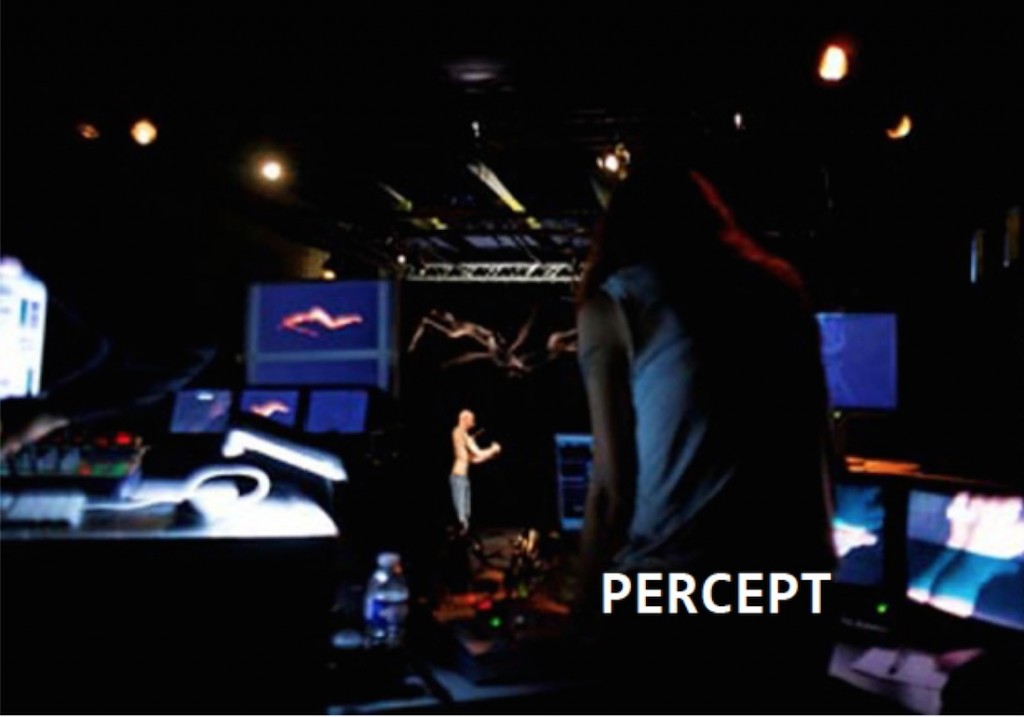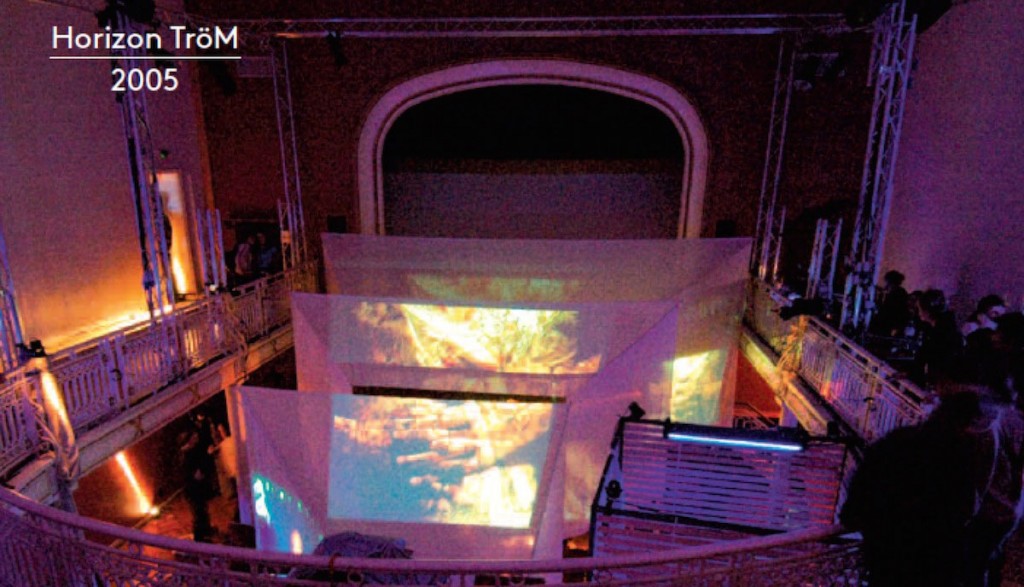This interview was published in the monograph Memento Body of the media artist Thomas Israël (Editions La Lettre Volée 2012)
Lire cette interview en français
Philippe Franck : Can you take us back through your collaboration with Thomas Israël?
Jacques Urbanska : Like myself, Thomas started out in the performing arts [Conservatoire Royal de Liège/INSAS]
and that is how we met. He was one of the performers in my project Les Lectures intimes. He even used this project to create his first multimedia performance: Horizon TröM. That was in 2005, and I helped direct the actors and in the production of a sound installation/performance. It was not an easy experience for Thomas: the project had begun one year earlier, in the form of a play (TröM), but the theatre’s management had withdrawn it from the programme two weeks before its scheduled première (for quite obscure reasons regarding differences of opinion about directing). Thomas was deeply affected by this. I was working at the time on walk-about shows/performances, so I offered to help and we had a few meetings. I quickly understood that he didn’t really need any help, just time and above all support. The work on TröM had in fact already generated a great deal of material: sound installations and videos, a corpus of texts, a visual universe and scenographic elements, etc., along with several ideas for interactive installations.
After only a few days of floating and hesitation, Thomas quite naturally identified the major outline of Horizon TröM. Although this experience was at first sight “negative”, it was in my view a turning point in Thomas’s artistic career. He broke away and distanced himself, to emerge not so much from the performing arts, but from a certain theatrical world in which he was beginning to feel constrained. This break made way for the exploration of other media, considered this time on their own merits rather than in terms of the requirements of the stage (as had been the case with TröM), including video art, sound art, real-time programming of processes and interactive processes, which redefine the notion of the spectator, etc. This enabled Thomas to redefine the possibilities offered to him and experience a true artistic renaissance.

Given that these projects were more lightweight, collaboration also became easier and faster, as they required less implementation. Thomas always needed to “collaborate”, to surround himself with other people to create, but he is also someone who needs a wide berth of solitude. He draws his inspiration from a quite hermetic creative process: most multimedia projects—especially video—can adapt very easily to this tension between collaboration and solitude.
P. F.: What types of artistic exchanges did your work with Thomas generate?
J.U.: Percept was a research project exploring spectators’ perception, the body and digital movement. The digital, digitised, pixelised, reworked, corrected, perfected, deformed, adjustable, endlessly malleable body: an interfaced body that fades away in favour of the image that one wants to present of it.
We created short, choreographic sequences that were performed on the stage. These were filmed and then reworked digitally and interactively in real time. They were presented either via individual projection in an immersive box (the box in which the spectator was lying down; the lid being a screen on which the reworked result of what had happened on the stage was projected), or projections on several screens placed in the room that offered a different rendition from that seen in the box. The show was therefore individual and collective, resulting both from the performing arts (two body/movement performers), interactive, multimedia arts (two visual performers, and a sound performer).

This twofold affirmation of the body and its actions was deliberate on our part: that of the naked, revealed performer/dancer executing a choreographic trajectory, and its digital parallels: the body and its filtered actions, decontextualised and instantly recontextualised in the video and sound projections.
P. F.: What is your perception of Thomas’s œuvre and its development?
J.U.: Since 2006, Thomas has not stopped; he has worked on a succession of subsidised multimedia projects, festivals, residences, video directing and V-Jing works, exhibitions in galleries, museums and permanent works in the public space, etc. His production is clearly oriented towards new media, but also towards more traditional media/works. He has been involved in very small projects and in very hefty productions in terms of time and budget…
Read the entire interview















